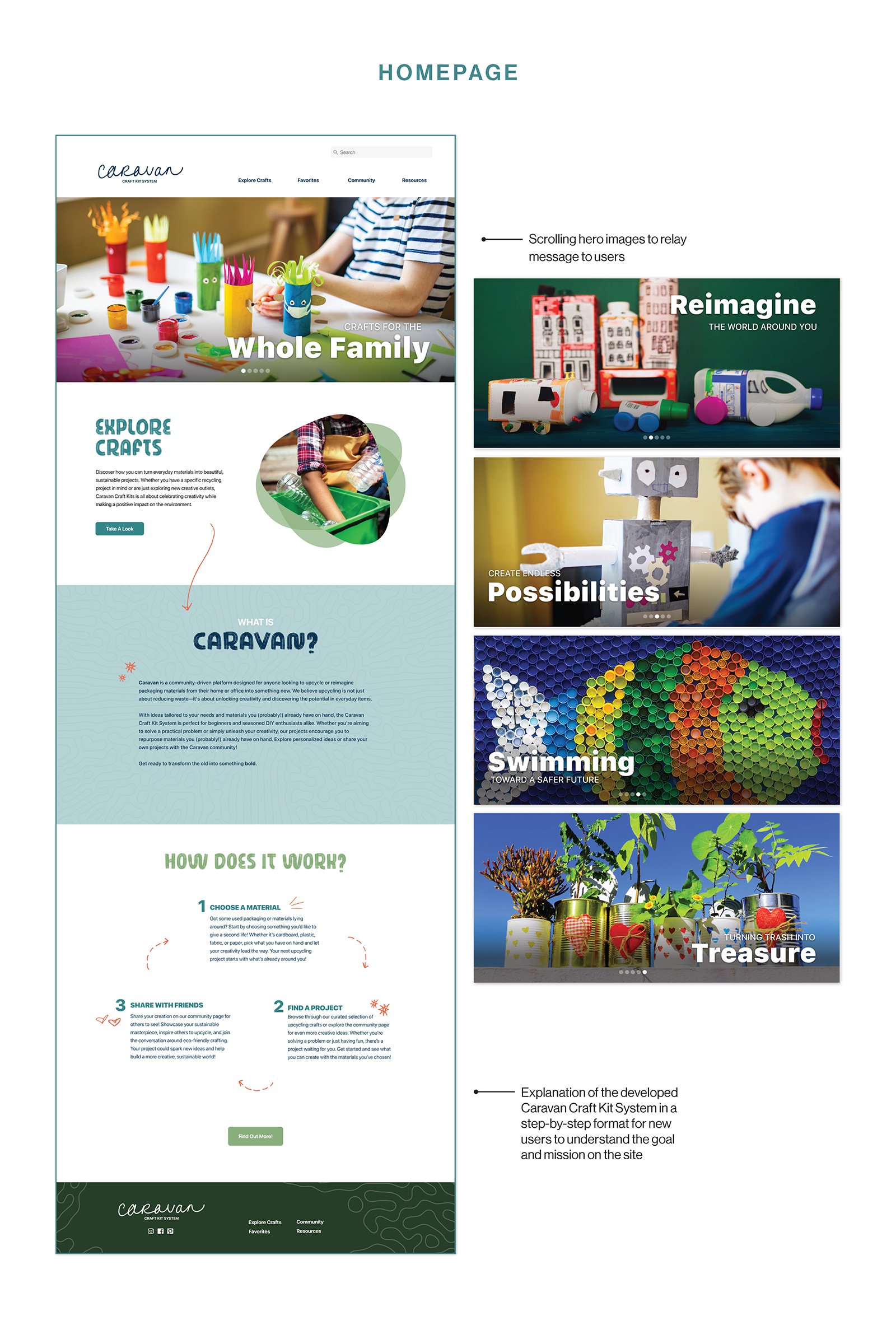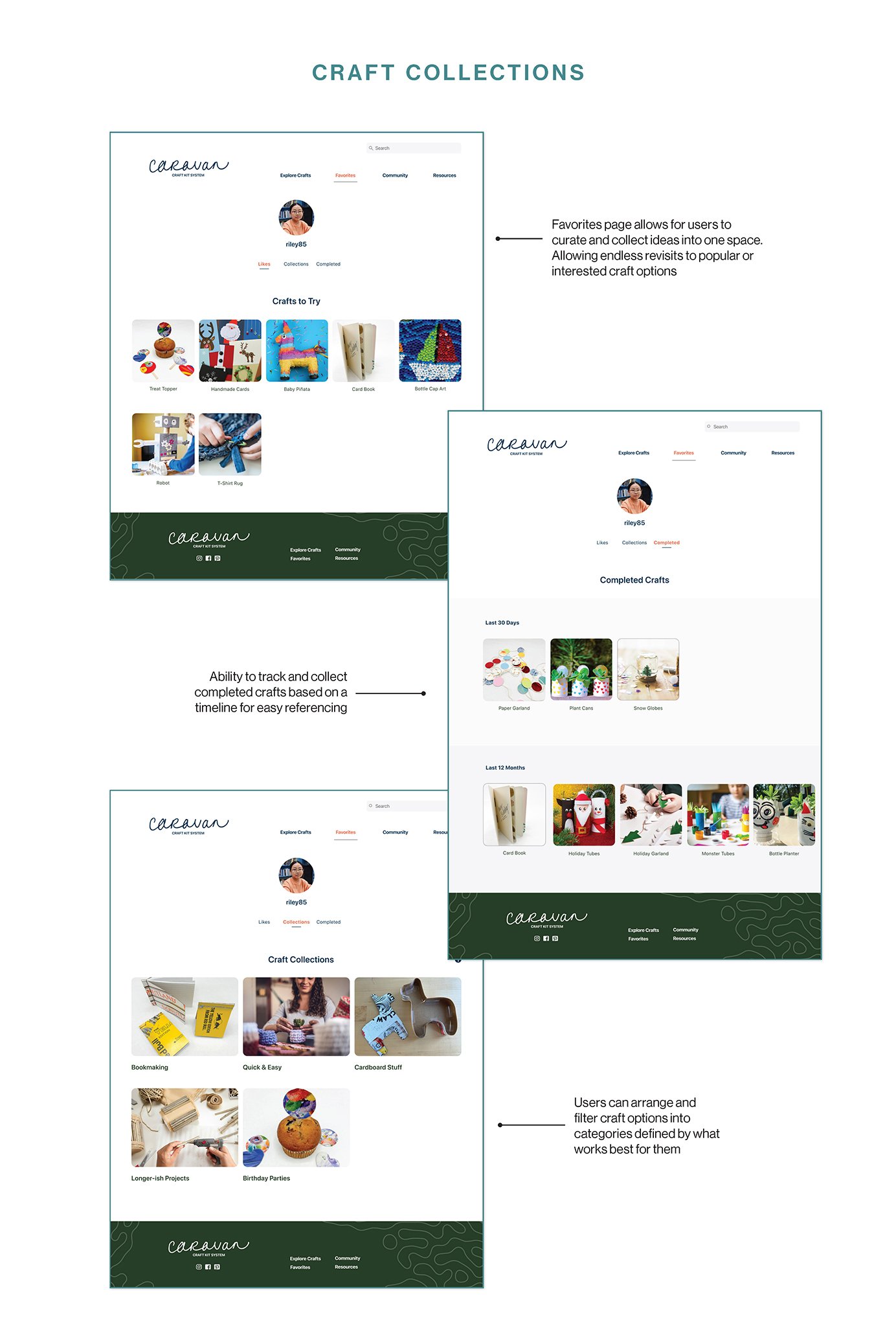
Caravan Craft Kit System
The Caravan Craft Kit System started as an answer to the question, “How can designers be more sustainable?”
This thesis study explores recycling and upcycling methods currently available to consumers, using sustainability-focused tools and resources to repurpose consumable materials. Investigations into material utility and repurposing were conducted through traditional crafting techniques, as well as the development of supplemental instruments and digital learning tools.
This multi-modal learning environment promotes consumer-driven methods for reusing materials found in homes, offices, and community spaces with increased accessibility and community connections regarding environmental education.
-
Emily Hodges, Student
Alex Braidwood, Major Professor / Graphic Design / HCI
Tina Rice, Graphic Design
Yongyeon Cho, Interior Design / HCI
-
Student / Thesis Work
-
2021-2024
Every member of society is already contributing to the broader cycle of consumption and disposal. When each sector of the industry works together, each small change has the potential to create a domino effect around the globe and generate a larger, beneficial impact.
A designer’s role within the supply chain
Through traditional and approachable reuse practices, the lifespan of materials has the potential to extend beyond the initial perceived end.
For designers, this approach encourages many to think beyond a singular focus of what is created on screen for the intended use it was asked to be. Instead, encouraging designers to expand their creative approach and think in a multi-faceted manner, can potentially give consumers more options once they’ve purchased the product.
Transparency between designers, manufacturers, and consumers could provide a more fluid creation process and help to generate products that consumers actually want or need to buy.
Based on a figure found within the book Supply Chain Performance Evaluation. (Hosseinzadeh Lotfi et. al., 2023)
Caravan Craft Kit System
•
Caravan Craft Kit System •
Traditionally, a caravan symbolizes a group traveling together who is united by a common destination or purpose. In this context, the term reflects the idea of moving together as a community toward a more sustainable way of life. The Caravan Craft Kit System encourages participants to make small, achievable changes in their daily lives.



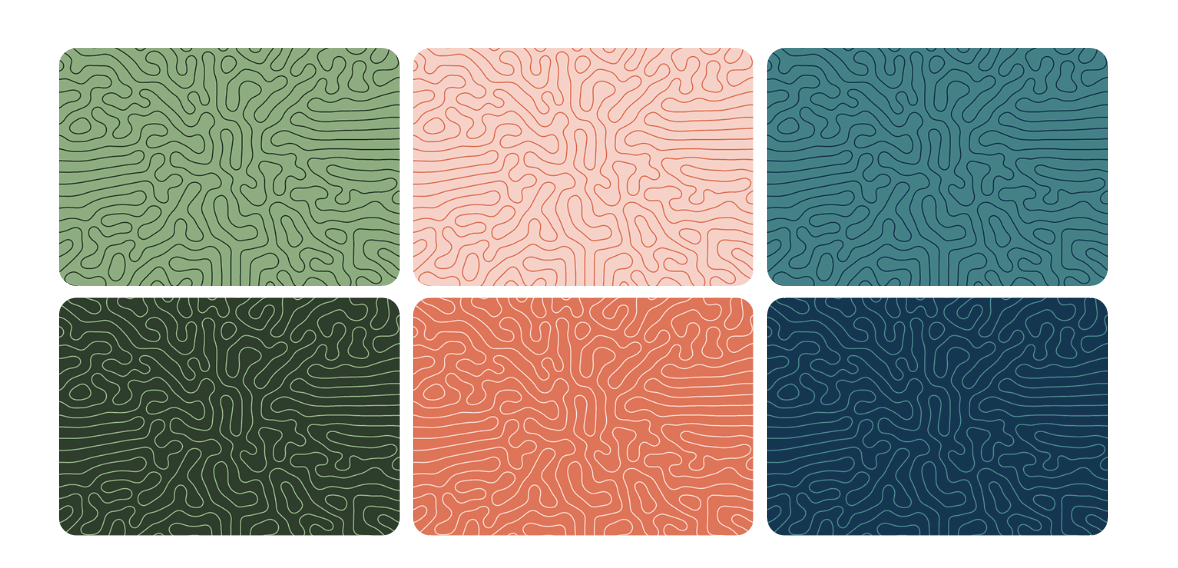
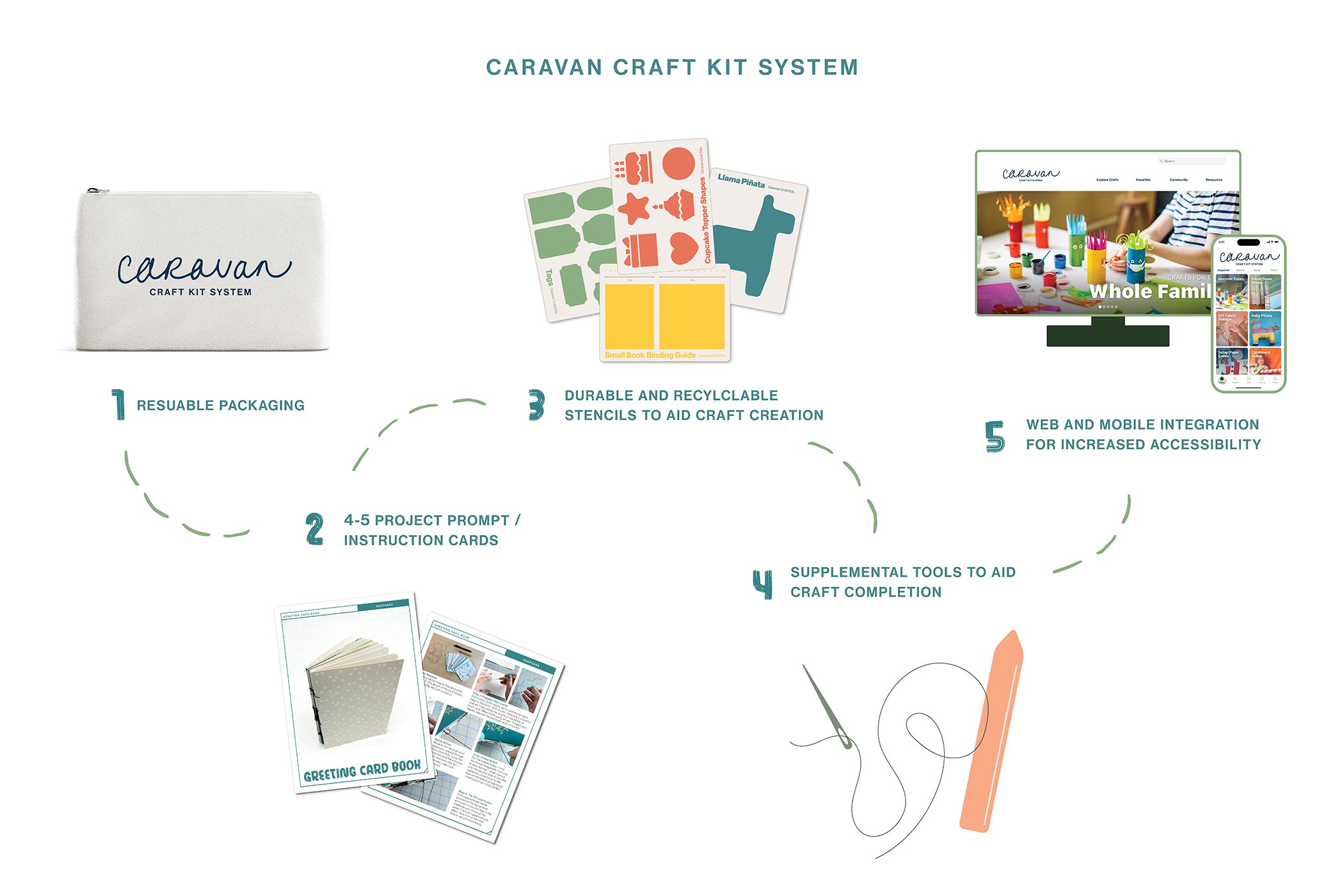
Instructional Craft Cards
The instructional craft cards provide users a creative prompt that works alongside the kit’s stencils or independently as a solo craft.
Each card is double-sided with one side providing the name, theme, image of the intended outcome, and a QR code that links to the video instructions on the Caravan website. The other side shows the step-by-step instructions for completing each craft.
Themes are represented by title and by color-coded grouping. The multi-functional aspect of the cards provides a blended learning approach for users to complete the crafts using either text-based or visual learning methods.
Reusable Stencils
Reusable stencils were developed for this system as a way to maintain approachability for as many users as possible. Each stencil was designed, fabricated, and tested to standardize its functionality.
The final stencils were laser-cut from a recyclable bookboard material that is also durable to last for many uses.
Digital Integration
Integrating digital access with physical materials and tools is the core advantage of this system. This approach aims to enhance both learning accessibility and the kit’s overall impact on users.
By merging hands-on tools with digital resources, users gain full access to both approaches and provide a fully flexible learning path, customized by the users themselves.
The flexibility of user access to the digital side of the platform was also considered, providing two main access points: direct access through web and mobile searches, and craft-specific instructional access via QR codes on the instruction cards.

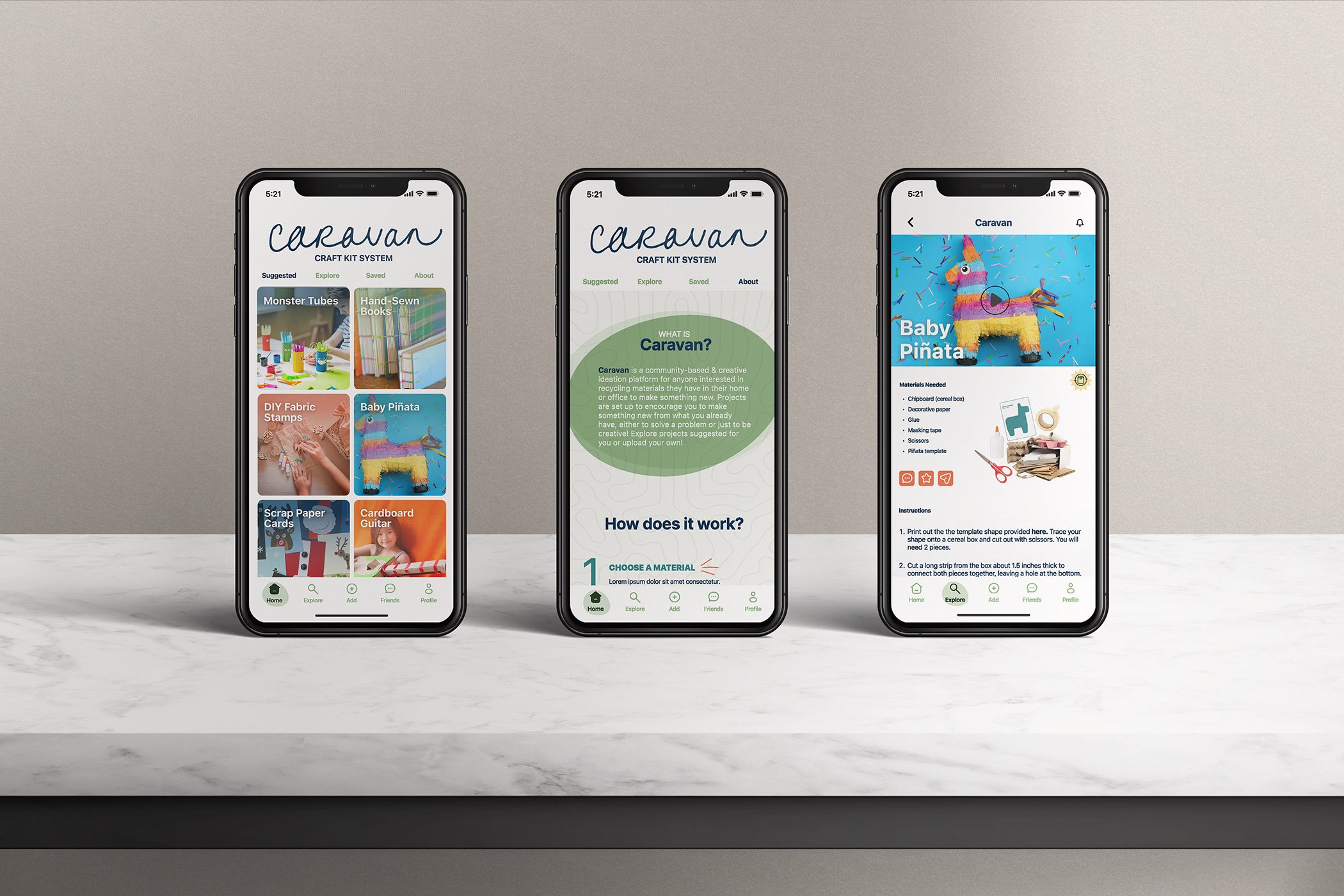
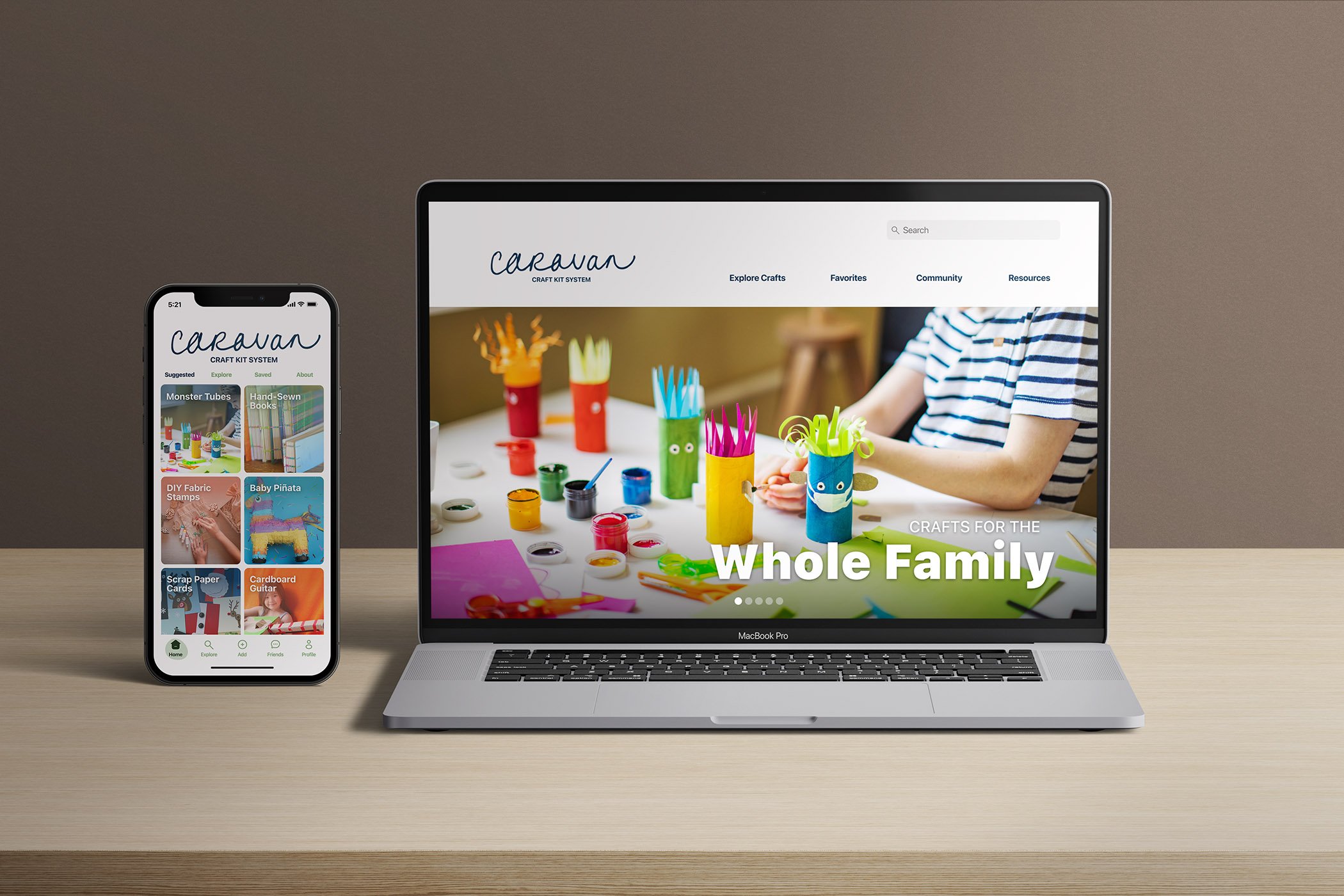

The Caravan System website acts as a central hub, where online crafts are collected from a myriad of online sources, curated and sorted to satisfy different user needs, and provide informative resources regarding the sustainable aspect of the system and the materials used.
